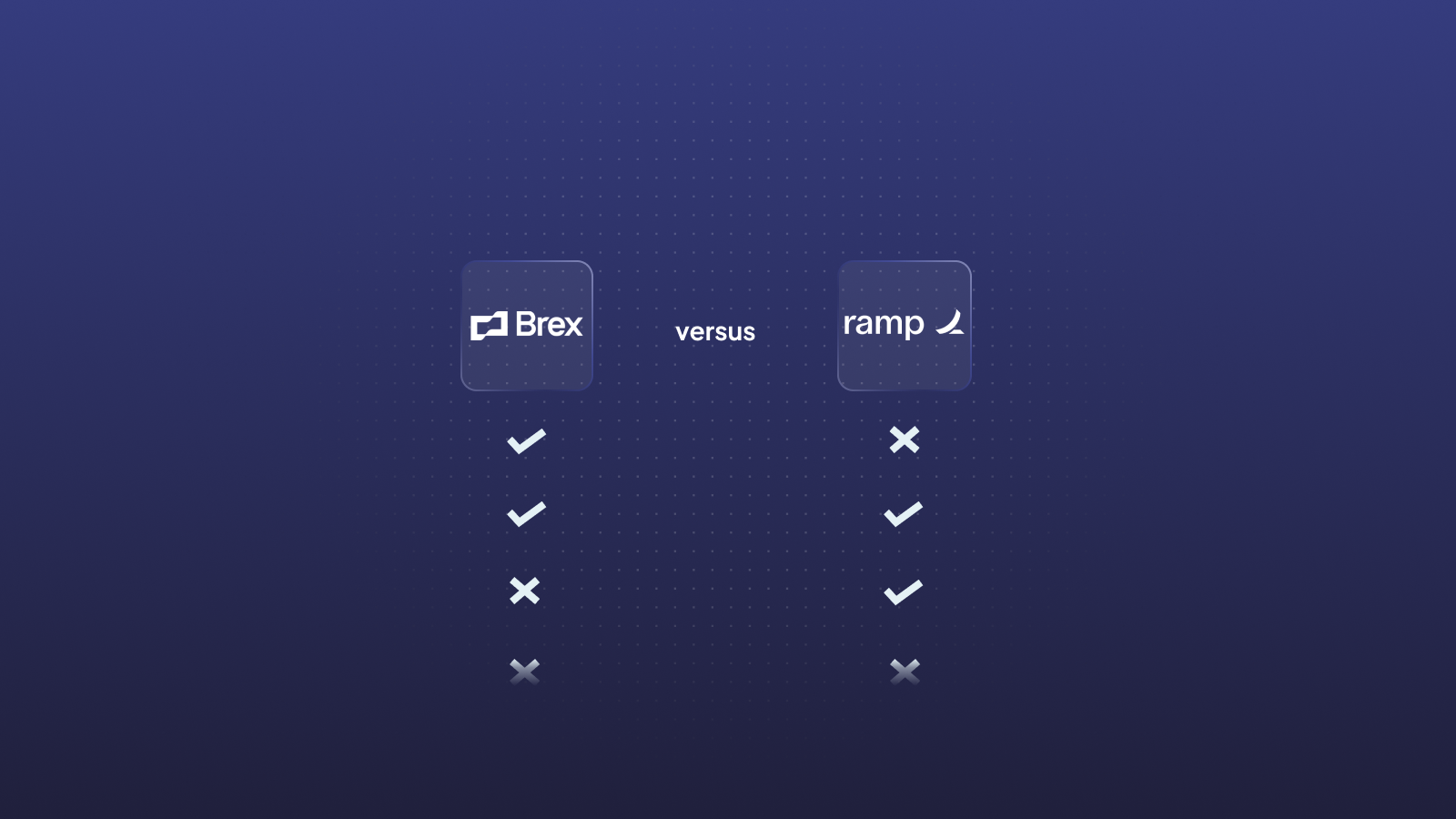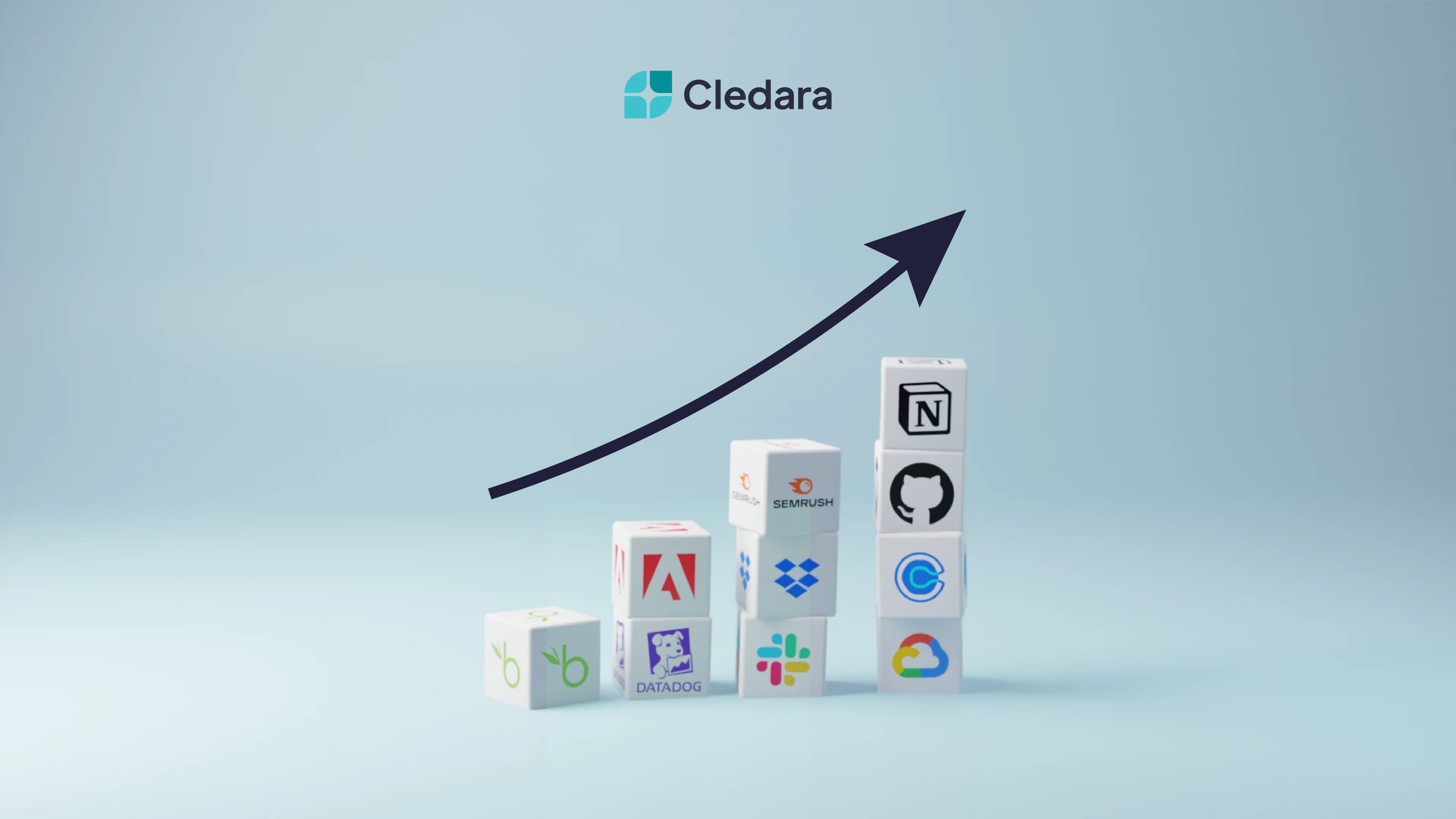In the bad old days, finance teams spent hours every month manually logging the team’s expenses, policing budget holders and asking everyone to please email over their receipts. There was only one business credit card, and it was passed around the office like a pack of gum. Thankfully, spend management tools like Brex and Ramp have come along—to lighten the administrative load and up the security game.
Both tools provide robust spend management solutions that can make a CFO’s job a lot easier. This article will provide a detailed comparison of the two platforms, so you can choose the best option for your specific circumstance.
As we’ll see, if software subscriptions are one of your major budget considerations, Brex or Ramp will be even more useful when paired with a SaaS management tool.
Brex vs Ramp: the ultimate comparison**
What you need to know when deciding between these tools, explained in granular detail.
What do Brex and Ramp do?
Brex and Ramp are both spend management tools for businesses incorporated in the US. They were created to address a few pain points with traditional business credit cards. They allow you to:
- Issue credit cards that aren’t tied to the cardholder’s personal identity or credit score—traditional business cards often were, which was a big pain point.
- Create new physical and virtual cards for employees easily so your spend management processes can scale with your business.
- Set budgets on both individual cards and teams’ card groups, and customize an approval chain for employees to request more cash.
- Track company expenses visually, with a customizable dashboard.
However, Brex and Ramp don’t offer exactly the same service. The key difference is that Brex is an FDIC-insured online bank which offers a variety of spend management tools. Ramp, meanwhile, is purely a financial operations platform. You must connect it to an existing US bank account (or, if you prefer, multiple bank accounts) to access its services.
Qualifying
To qualify to use Ramp, you must be primarily a US-based business, with at least $75,000 in cash in any US business bank account.
Brex is a little more flexible on the geography and scale of your operations. To qualify, businesses must have a US EIN issued by the IRS, a valid US incorporation, and a physical address in the country, but their founder may live abroad. The minimum cash balance you need stands at $50,000, and this can be negotiated down further if you’re referred to them by a partner. They did, however, dramatically end support to small, bootstrapped businesses in 2022, so if you don’t have the backing of an institution of some kind, you won’t qualify.
Overall winner: Brex if your business is smaller, or not totally US-based.
Cost
Neither software is expensive. Brex Premium costs $12 per user per month, while Ramp is always free.
Overall winner: Ramp—you can’t argue with free.
Expense management features
Both tools deal with expense management in a relatively similar way, allowing you to create granular budgets for your teams. For example, if you’re sending the sales team to a conference, you can give them a group budget as well as an individual budget, and even set pre-approved limits on spending categories—such as food, accommodation and travel.
Beyond this, Ramp and Brex also both offer the ability to create point-of-sale restrictions about what business dollars shouldn’t go on. So, if the sales team is likely to gamble away their travel budget, you can create a rule to block transactions at casinos.
Ramp has a few extra features designed for bigger companies here. For instance, you can nominate sub-admins to manage budgets, so heads of teams can approve requests from their subordinates.
Overall winner: Ramp takes the edge for larger companies.
End-user features
Both Brex and Ramp offer an app for end users, to help employees streamline their expense reporting. In the case of Brex, users get a notification every time they make a purchase, reminding them to log the expense—whether that means uploading a receipt or leaving a memo.
Ramp’s app also makes expense reporting much easier, allowing users to automatically forward receipts to their finance team for reimbursement. However, some complain that its functionality is too limited compared to the web portal.
Both platforms also offer employees a Chrome extension to speed up expense reporting. This allows you to pay using your Ramp or Brex card easily, and submit receipts with a single click.
Overall winner: it’s a tie.
Software management
Brex and Ramp are both excellent for managing your teams’ business expenses, and giving you a central location to track your company’s spend—from the office stationary budget to payroll.
But if software subscriptions are the expense that gives you the most headache, you’ll save time and money by using a SaaS management tool alongside Brex or Ramp.
Software is typically a business’ second biggest expense after payroll, and it’s also the hardest to keep in check. Every tool is on its own subscription cycle, and many of them have contracts you need to negotiate. What’s more, it’s hard to understand whether your team gets ROI on the tech they pay for, or whether subscriptions are just rolling on, unused.
Using a SaaS management tool like Cledara typically reduces your software expenses by 30%. Cledara gives you:
- A dashboard that shows your teams’ software use so you can understand if you’re paying for two products that do a similar thing, repeat subscriptions, or underused tools.
- Data to show whether you’re overpaying for a software tool, based on industry-leading insights from over 1,000 companies’ software usage
- A central hub to renew, change or delete tech subscriptions, saving hours of admin.
- A streamlined approval process for new software tools that makes it easy to collaborate with Security and IT teams. Since it’s not just the Finance folks in charge of tech buying, this is a real hack to help you action software spending decisions faster.
Ramp has recently added a feature that, like Cledara, allows you to single out software you’ve got two separate subscriptions for. But only Cledara can tell you whether or not your team is actually using the tools you buy.
As your business scales and your software usage begins to sprawl, Cledara will help you keep your tech expenses rational and necessary. It pays for itself.
Reporting and forecasting
This is one area where Brex and Ramp are more clearly differentiated for different sizes of business. There are some common features—each tool offers an online portal where you can see a full overview of your global spend, or zoom in to spending from individual team members or card users. Interestingly enough, both platforms’ reporting tools include an AI feature that examines your spend patterns and can advise on where to make cuts.
Ramp is set up for more mature companies who have operations across multiple countries and therefore need robust processes for business travel. There’s a dedicated dashboard that contains all spend information related to every business trip, including itineraries and flight details.
Brex, meanwhile, really excels at spend forecasting. In 2022, they acquired Pry, a financial planning software platform for financial modeling which is mostly targeted at startups. Their scenario planning tool means you can see what would happen to your budget if you, for example, met aggressive revenue targets, or missed them entirely. For those who need to keep a close eye on their burn rate, this could be a game changer. The tool also has a track record of helping startups successfully raise rounds. Whilst Ramp does offer forecasting tools, Brex’s feature here is more mature.
Overall winner: Ramp if you’re a multinational, Brex if you’re a startup
Integrations
Both Brex and Ramp offer a range of integrations and will slot easily into your tech stack. Crucially, both are compatible with most major accounting platforms including Quickbooks, Sage and Intacct. However, only Brex integrates with NetSuite, so if that’s your accounting tool of choice, they’re a better pick. Make use of any of these integrations and you’ll be able to automate bookkeeping tasks like matching up vendors to spending categories—which will save hours every week.
Both tools are also compatible with the security tool Okta, the messenger tool Slack, and the food delivery and travel app Uber for Business. They also both offer an API.
Overall winner: There is not much in it unless you use NetSuite, in which case Brex wins.
Cashback and rewards
Both Brex and Ramp offer generous rewards programs.
Brex uses a points-based system, which you can redeem against a vast array of business-related services, from Amazon Web Service credits to airmiles or executive coaching. There’s 1 point per dollar spent, with perks for specific categories (triple points for restaurant spend, and quadruple points for travel spend).
The offer is undoubtedly a good one—the only downside is that understanding the system and coordinating employees to maximize points will take some additional energy.
Ramp’s rewards program is simple and compelling: 1.5% cashback on all purchases. This can add up fast, and there are no spending caps or categories to contend with.
Winner: Ramp takes the edge, since their rewards program requires less management.
Customer support
Both tools offer 24/7 customer support by email, messenger chat or phone call, for both account admins and, when necessary, end users.
Overall winner: Ramp’s customer service has a slightly better reputation.
Conclusion**
Chances are, your finance team will come to love whichever of these two spend management solutions you choose. Both are great options to protect your company card details and gain control of your outgoings. However, in summation:
- Brex is the best tool for funded early-stage startups. As their acquisition of the financial modeling tool, Pry, shows, Brex is really committed to serving startups well. They are, however, firmly seeking companies with institutional backing rather than bootstrapped small businesses, so this is less a tool for the little guy than for the not-yet-multinational guy.
- Ramp is the best tool for scale-ups and established companies. Voted the best spend management tool 2023 in the G2 satisfaction survey, it’s designed to handle large businesses with border-crossing operations and complex chains of stakeholders.
Cledara, a SaaS management tool, is a wise additional purchase if your team manages a lot of software subscriptions. It will help you gain control and visibility over your SaaS, helping you reduce your tech spend by an average of 30%. In the bad old days, finance teams spent hours every month manually logging the team’s expenses, policing budget holders and asking everyone to please email over their receipts. There was only one business credit card, and it was passed around the office like a pack of gum. Thankfully, spend management tools like Brex and Ramp have come along—to lighten the administrative load and up the security game.






.webp)

.webp)

.webp)



%2520(1).webp)
.webp)

.webp)